Text

Jody Rainwater, Everett Lilly, Earl Scruggs, Lester Flatt & Art Wooten, WDBJ 1951
37 notes
·
View notes
Text

#QSLfriday WDBJ (now WFIR) is Virginia's second oldest radio station, preceded by only WNIS in Norfolk. WDBJ was initially licensed to the Richardson-Wayland Electrical Corporation. The company sold radio receivers, but because people in the Roanoke area had no local stations to listen to, they could only pick up distant signals after sunset.
On June 20, 1924, WDBJ officially went on the air. The studios were in the back of the company's store until 1926 when WDBJ moved to new studios at The American Theater on Jefferson Street and Campbell Avenue in Roanoke. In 1929, WDBJ became the Roanoke affiliate of CBS Radio—a link that would last for more than 70 years. The station was sold to The Roanoke Times newspaper in 1931.
This QSL was sent to an unknown listener circa 1924-25.
Committee to Preserve Radio Verifications | Tumblr Archive
1 note
·
View note
Photo
Originally posted April 25, 2014. The link for more information about TV laps is no longer good; try this one. Also, this haunting item on eBay was sold long ago.
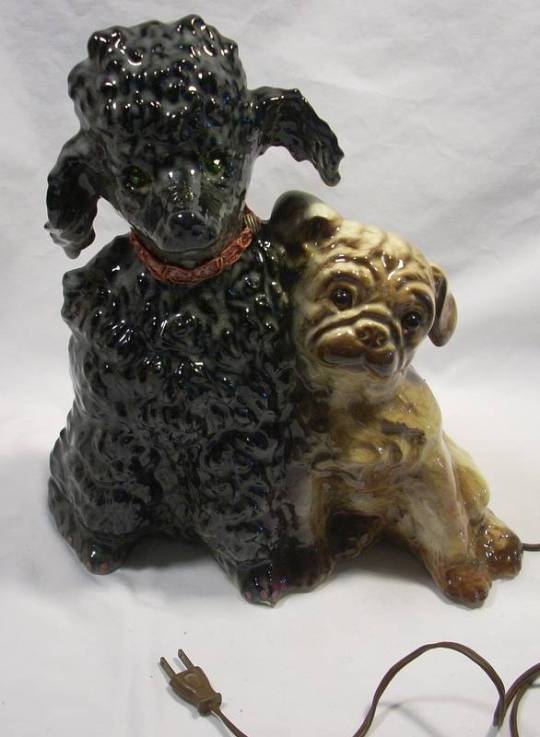
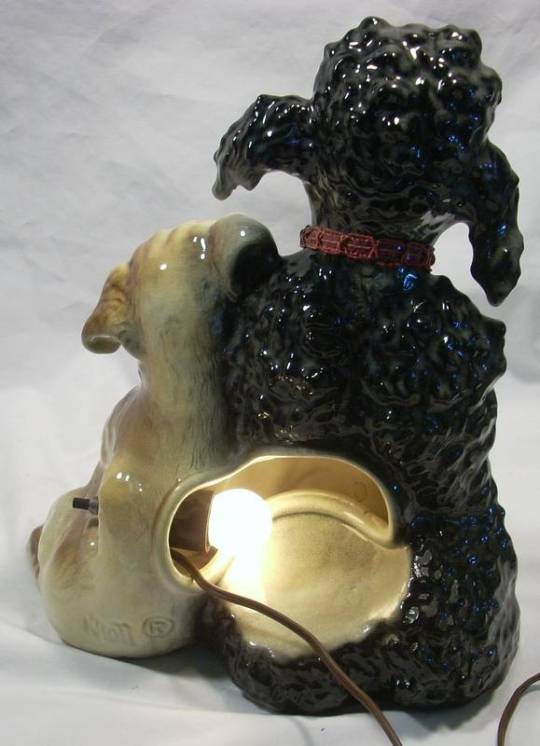

Terrify your children with this 1950s TV lamp featuring a black poodle and a pug bulldog – with glowing eyes.
27 notes
·
View notes
Photo
Originally posted April 24, 2014.
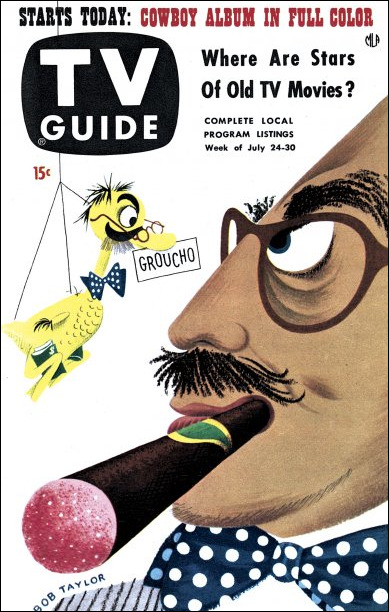

You Bet Your Life was a quiz show that aired on both radio and television, hosted by Groucho Marx with announcer and assistant George Fenneman. The show debuted on ABC Radio in October 1947, then moved to CBS Radio in September 1949 before making the transition to NBC-TV in October 1950. Because of its simple format, it was possible to broadcast the show simultaneously on radio and television.
The play of the game, however, was secondary to the interplay between Groucho, the contestants, and occasionally Fenneman. The program was rerun into the 1970s, and later in syndication as The Best of Groucho. As such, it was the first game show to have its reruns syndicated.
Via: 1 | 2
75 notes
·
View notes
Text

#VoxPop Rarely seen or heard beyond the live audience, the popular radio program Vox Pop invited audience members to participate in parlor games for cash prizes before each broadcast.
Before the July 19, 1943, broadcast from Edmonton, Canada, two audience members competed to win a cash prize tied to a piece of string. Host Warren Hull gave gentle guidance while Corporal James Canna and other interviewees looked on.
4 notes
·
View notes
Photo
#PBSwednesday Originally posted April 24, 2014.
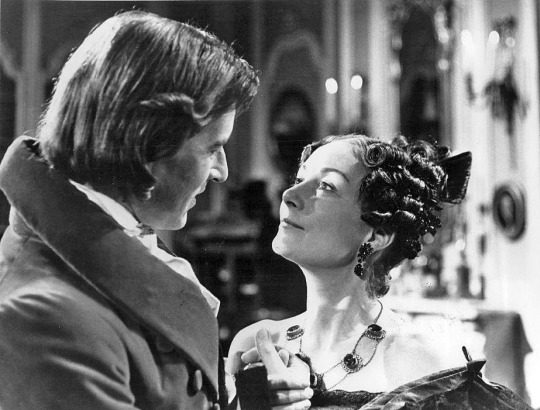
Notorious Woman was a 1974 BBC seven episode serial based on the life of French author George Sand. It starred the extraordinary Rosemary Harris (above) in the title role, Alan Howard (above) as French dramatist Prosper Merimée and George Chakiris as Frédéric Chopin.
In the United States, the series was broadcast in 1975–1976 as part of the fifth season of Masterpiece Theatre on PBS. Harris won an Emmy for Outstanding Lead Actress in a Limited Series. (IMDB)
6 notes
·
View notes
Photo
Originally posted April 23, 2014

Rembrandt FE-852D, German Democratic Republic (1953).The TV set was produced by Sachsenwerk plant and was exported to the USSR. More photos…
76 notes
·
View notes
Text

#RudyTuesday On election night in 1948, "television came up with more charts than a statistician and more blackboards than a railway terminal to keep... viewers abreast of one of the most sensational elections in history." – Boston Globe, 11/7/1948
Only thirty-some television stations were in operation in 1948, and less than one percent of U.S. households owned a television set. But by the next presidential election in 1952, more than a third of all households would own a television set, and the networks would broadcast coast-to-coast coverage of election returns. Something more exciting than chalkboard tallies was needed.
A new book, Predicting the Winner: The Untold Story of Election Night 1952 and the Dawn of Computer Forecasting, by UMD professor Ira Chinoy, just published, tells the complex but fascinating story of how this futuristic innovation came to be.
One in a series of photos from the Rudy Bretz papers at UMD.
4 notes
·
View notes
Text

CBS: “It is now tomorrow…” (1949).
Look closely at your new horizon...
These are not the shapes of things to come but of things already here.
For in autumn 1949, television in its full proportions is clearly visible... creating a new pattern of living and buying in America.
Via A Word from Our Sponsor on Tumblr. Originally posted April 18, 2014.
9 notes
·
View notes
Photo
#QSLfriday Originally posted April 19, 2014.

From the Committee to Preserve Radio Verifications:
Beginning in the early days of broadcasting, radio listeners developed the practice of writing to stations that they heard over long distances. They described the programming they heard, and asked the station to ‘verify’ in writing that it was indeed their station that was heard. Stations soon began responding to these ‘reception reports’ with their own distinctive ‘verification cards.’ These cards came to be known as ‘QSLs,’ the letters ‘Q-S-L’ being the international morse code symbol for ‘I acknowledge receipt.’
Most stations use specially designed QSL cards that are unique to them. These cards often convey a sense of the country’s history or culture, details about the station, the station emblem, etc. Usually they also contain details of the listener’s reception - date, time and frequency. Some stations, particularly the smaller ones, use letters instead of cards, often issued on decorative stationery.
Collecting QSLs became an important element in the hobby of long distance (‘DX’) radio listening, and remains so today. DX listening is only tangentially related to amateur radio, where radio operators talk with each other over their own transmitters (and also exchange QSLs of their contacts). The listening DXer does not talk over the air, but gets his or her pleasure in hearing new stations, writing to them and obtaining their QSL.
Library of American Broadcasting collection.
16 notes
·
View notes
Text
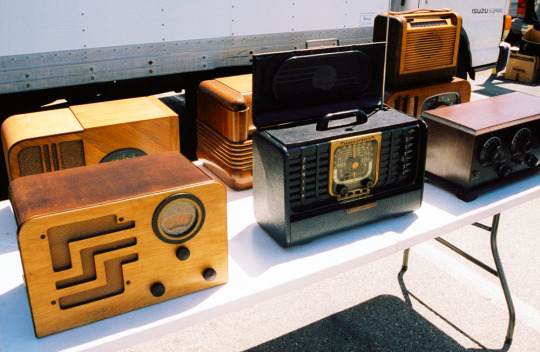
Old radios by Jessie Askinazi.
Originally posted on April 19, 2014, from jessieaskinazidiary on Tumblr, now deactivated.
10 notes
·
View notes
Photo
Originally posted April 19, 2024. (Source link is broken.)

Roger Tallon, portable TV Téléavia, 1966. ©ADAGP, Paris 2012. Via Les arts decoratifs, France.
162 notes
·
View notes
Text

#QSLfriday WLAC was first authorized in November 1926, owned by the Life & Casualty Insurance Co., with its call letters chosen as an acronym of the owner's name. Studios were located on the fifth floor of the Life and Casualty building in downtown Nashville.
In 1928, WLAC became Nashville's CBS Radio Network affiliate. In its early years, the station provided local news, studio-orchestra musical features (accompanied by an in-studio pipe organ), farm reports, and some educational programming. Its main competitor in that era, WSM, became known as the radio station where country music essentially developed and became a national phenomenon.
When country music became a big business in the late 1940s, WLAC added early-morning and Saturday-afternoon country shows in an attempt to steal some of WSM's thunder. Otherwise, the station prided itself as a pillar of the community and placed emphasis on general full-service programs. (WIkipedia)
3 notes
·
View notes
Photo
Originally posted April 18, 2014.
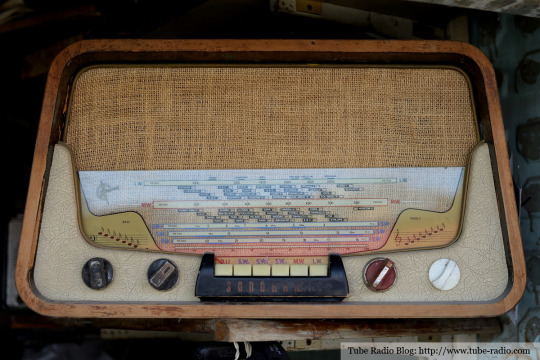
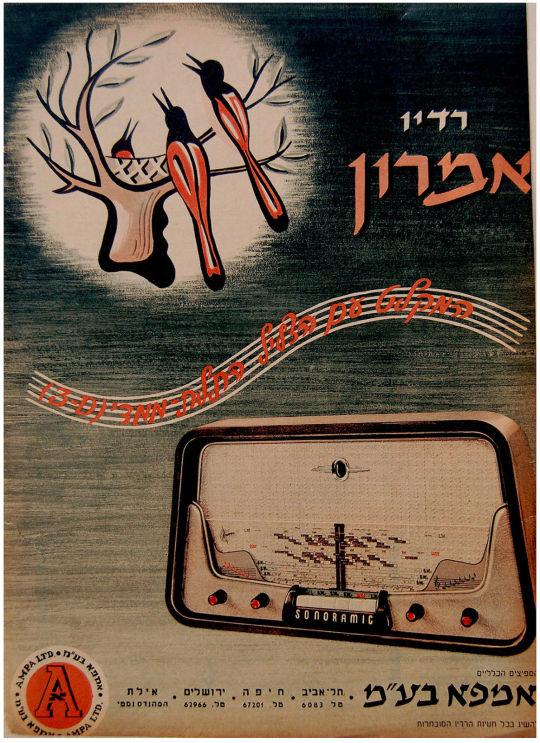
Amron Sonoramic Radio With Advertisement, Israel (1960).
119 notes
·
View notes

